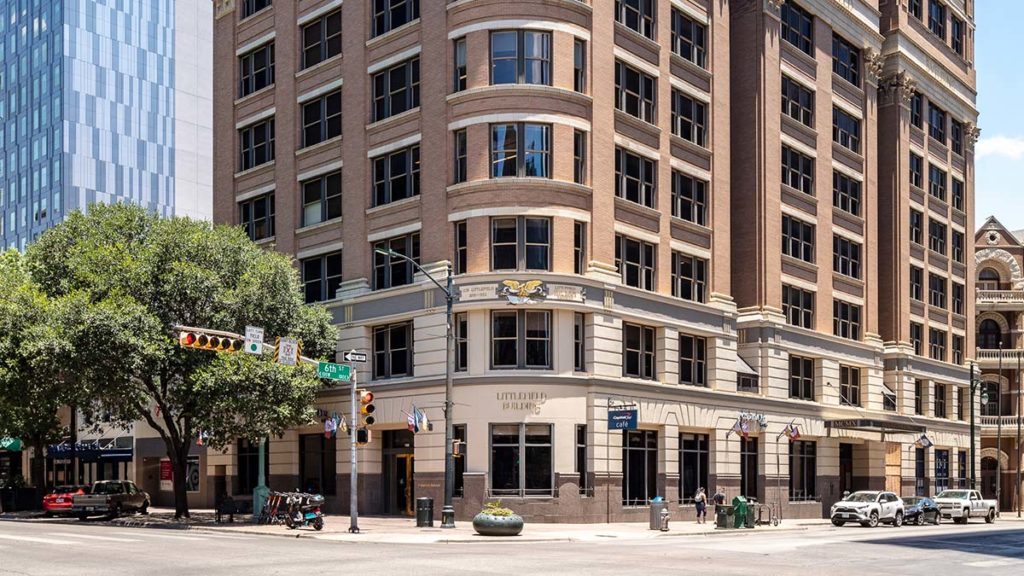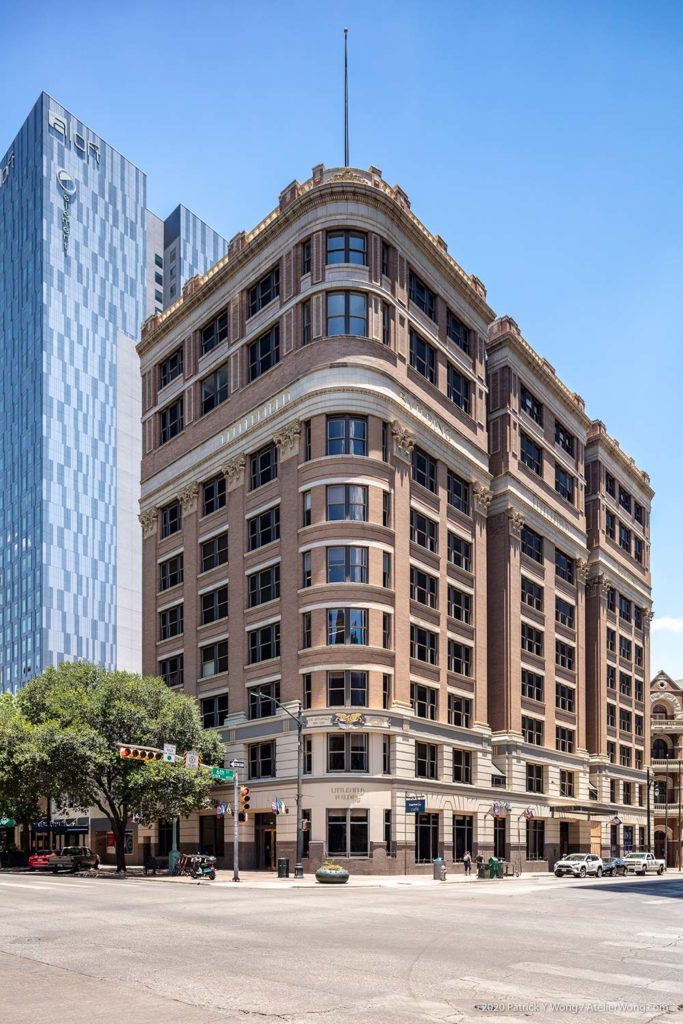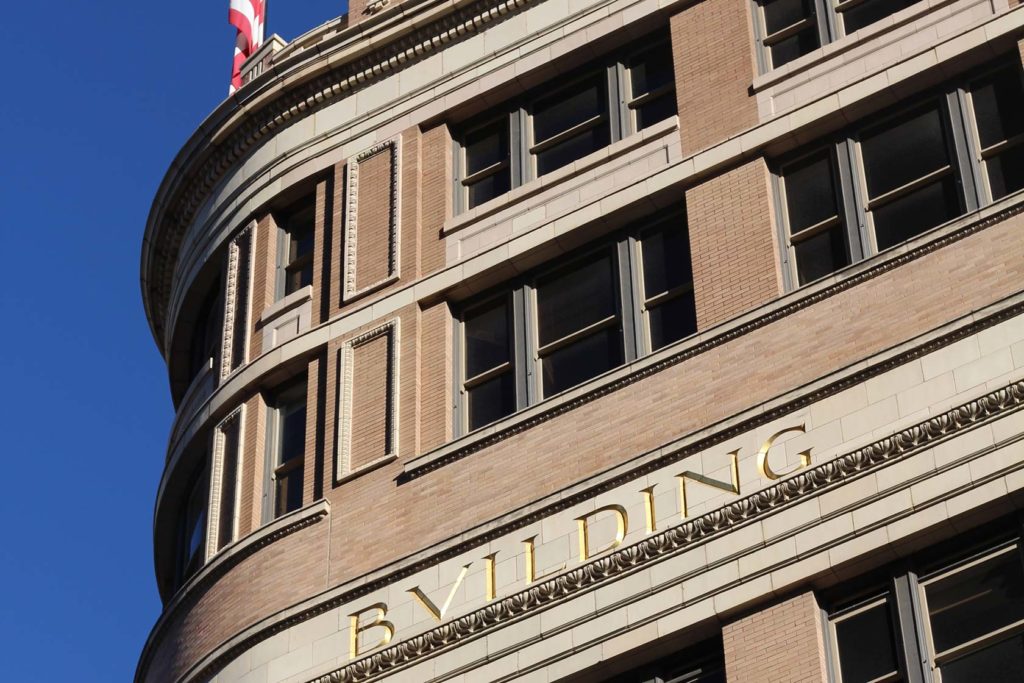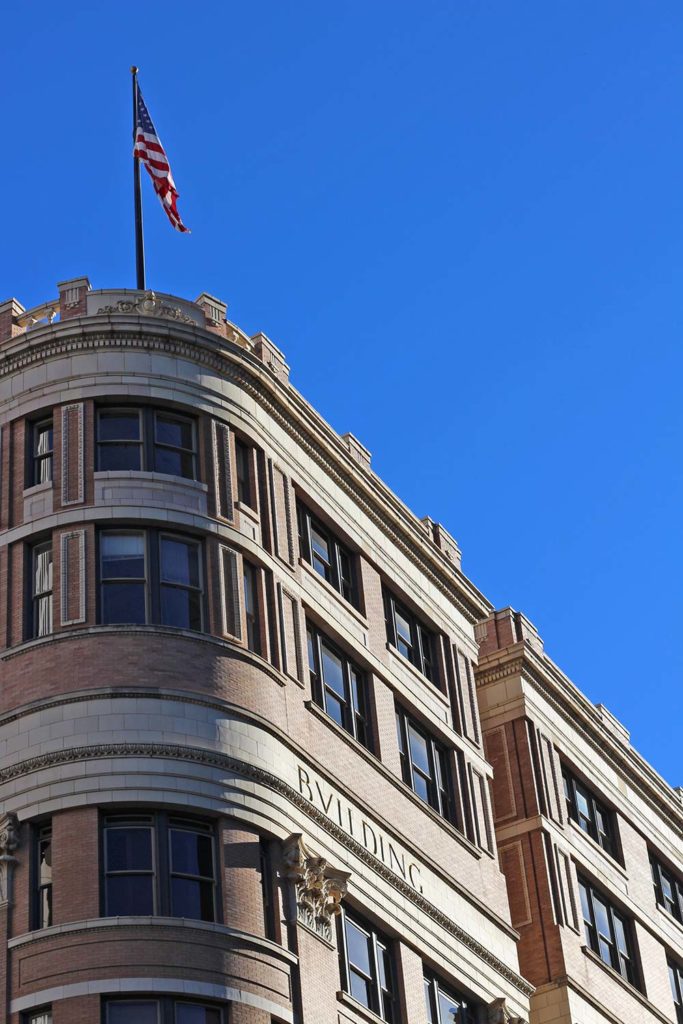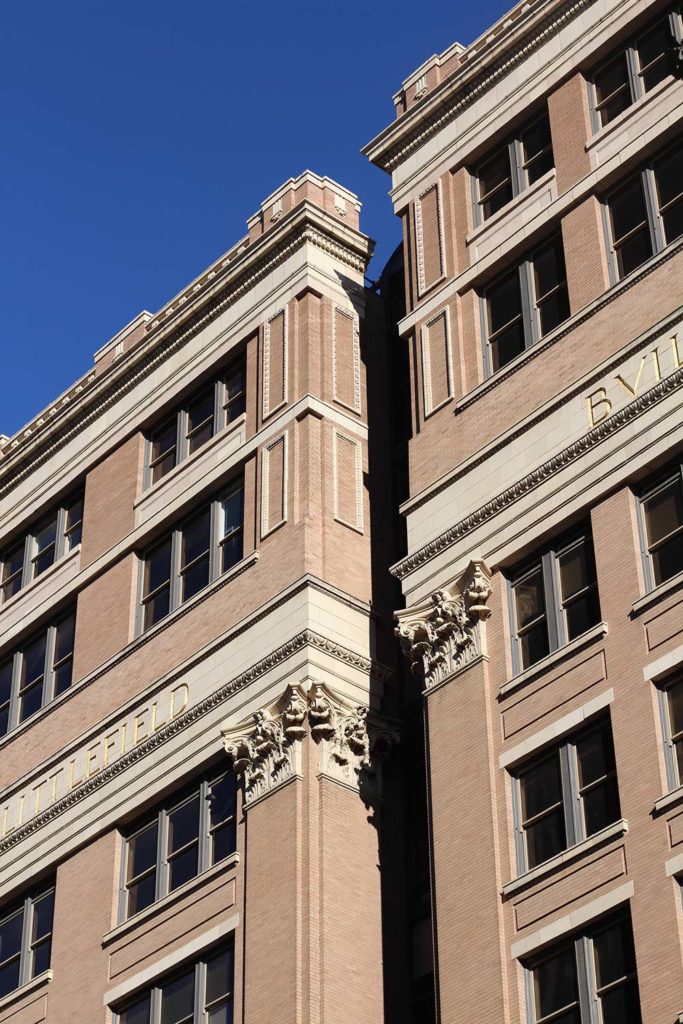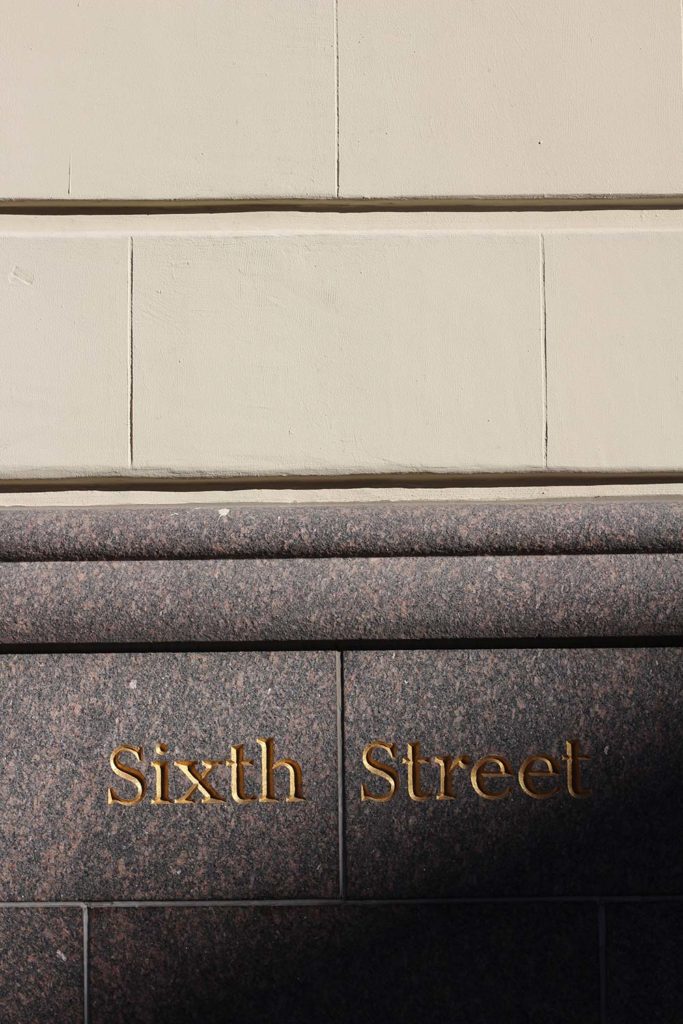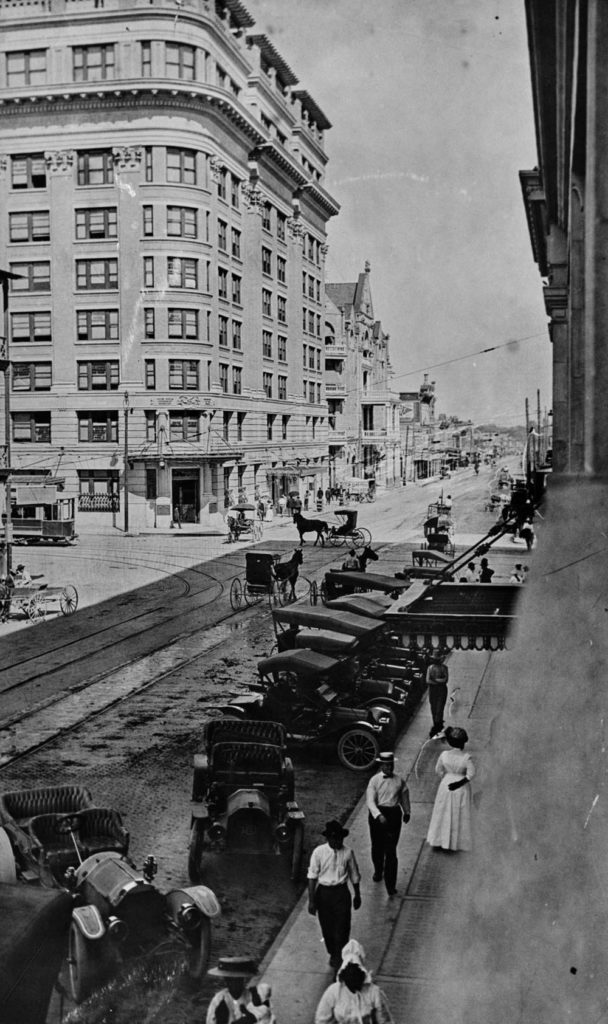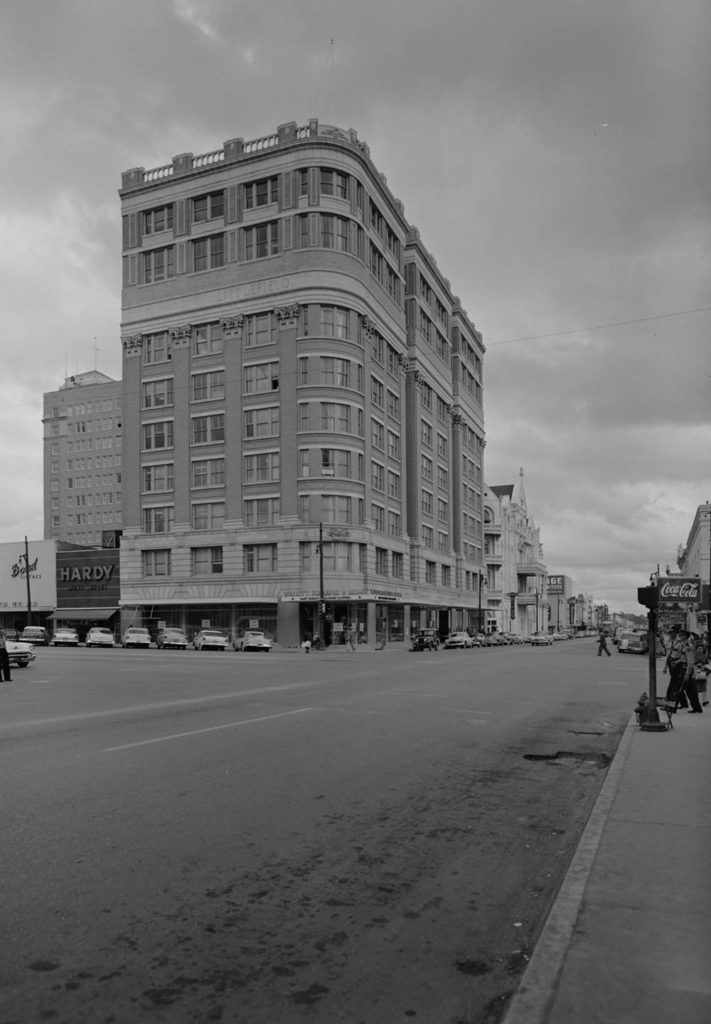Like the nearby Scarbrough Building, the Littlefield Building broke new ground when it opened in 1912 as the first high-rise office building in Austin; together, the structures formed the city’s earliest business center. Considering that the two uppermost floors once contained residences, the Littlefield Building may also be seen as a predecessor to the mixed-use buildings that populate Austin today.
The Littlefield Building is named after its first owner, George Washington Littlefield, a Texas cattleman turned banker. When Littlefield established his American National Bank in 1890, he set up shop next door at the Driskill Hotel, which was one story taller than the headquarters of the Austin National Bank, his main competitor (put a pin in that). Two decades later, Littlefield—who had become a major player in the city and a benefactor of the fledgling University of Texas—purchased this site and began construction of his own building.
Originally, the Littlefield Building consisted of eight stories: the ground floor housed the bank, the next six floors contained 300 offices, and residences (dubbed the “Littlefield Quarters”) occupied the top floor. Above it all, a shaded rooftop garden became the destination for Austin’s elite to see and be seen. However, sharing the title of Austin’s tallest structure with the neighboring Scarbrough Building did not sit well with Littlefield, and shortly after the building opened he replaced the rooftop balcony with an enclosed ninth floor. In fact, with over 2 million pounds of steel and 1.5 million bricks, the structure could have supported an additional four stories!
While the exterior has remained unaltered, the interiors have lost their historic trimmings. The main entrance once boasted a pair of bronze doors from Tiffany & Co. while the bank lobby was decorated with six large oil paintings; both elements featured scenes of ranch life, which was the source of Littlefield’s wealth. A waiting room adorned with carved mahogany housed a women’s banking center—the first in the city.
True to the Beaux Arts style, the Classical elements on the façade, including the brick Corinthian columns spanning five stories, are purely decorative. Compare this façade to the exposed glass-and-steel construction of 515 Congress (at the southeast corner of 6th and Congress). While these two buildings may look like they are from different worlds, their underlying structures are practically identical. What sets one apart is the architect’s decision to express rather than conceal their modern structural methods. Even as the Littlefield Building took shape, a new style called “modernism” was emerging in Europe; by the middle of the 20th century it would sweep the globe. – Bud Franck
